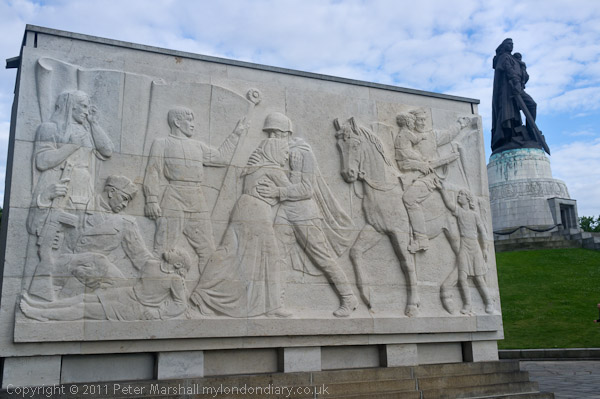
Around 80,000 Soviet soldiers died in the Battle of Berlin in April-May 1945, so it is perhaps not surprising that three Soviet War Memorials were built in the city after the war. Treptower Park which was completed in 1949 was the central war memorial of East Germany. It commemorates all Soviet soldiers who died in the war as well as the 5,000 who are buried there.
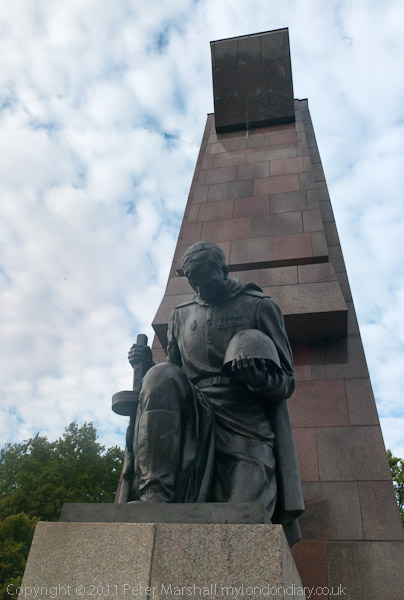
Much of the stone used in building it came from the New Reich Chancellery, commissioned by Hitler from architect Albert Speer in 1938 as the headquarters for a Greater German Reich. A vast building completed in 1939 it became Hitler’s official residence as well as housing the various ministries of the Reich, and the bunker in which he committed suicide was in its garden.
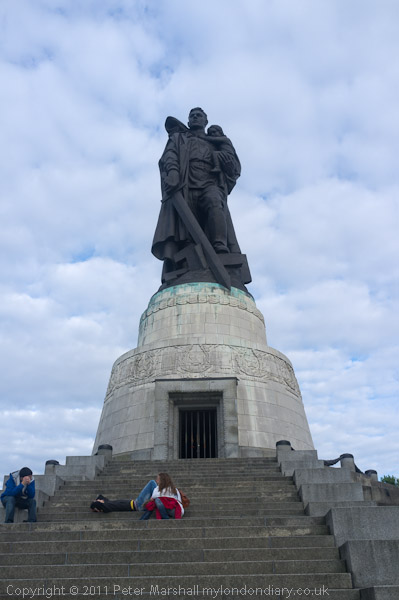
The building was badly damaged, particularly in the final fight for Berlin, where it was the scene of the final stand by German troops. Wikipedia quotes Andrei Gromyko who visited the site shortly after as saying it “…was almost destroyed… Only the walls remained, riddled by countless shrapnel, yawning by big shot-holes from shells. Ceilings survived only partly. Windows loomed black by emptiness.”
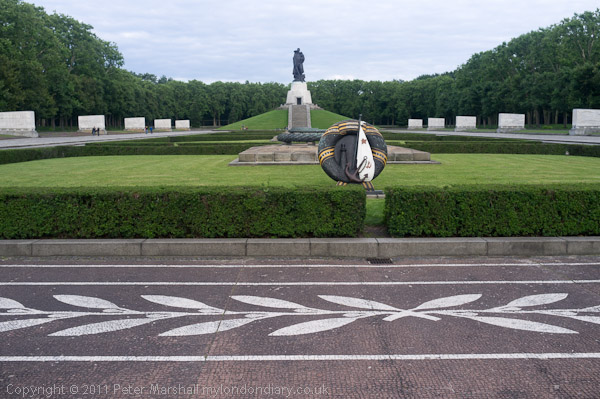
Some of the red granite (often called red marble) was used at Treptower, and also to repair the nearby U-bahn station. Possibly too some was taken by train to Moscow and used in some of the palatial Metro stations there. The most obvious use at Treptower is in the two giant stylised red Soviet flags with statues of kneeling soldiers at their base which form an gateway from the entrance to the main area of the memorial.
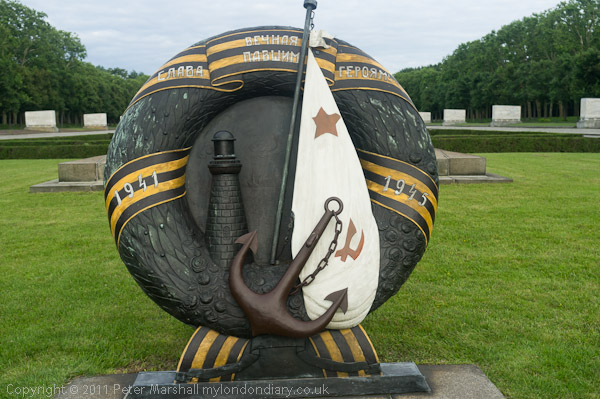
After the fall of the Berlin Wall, parts of the monument were vandalised with anti-Soviet graffiti. There was a huge reaction, with a quarter of a million East Germans demonstrating against the unidentified vandals.
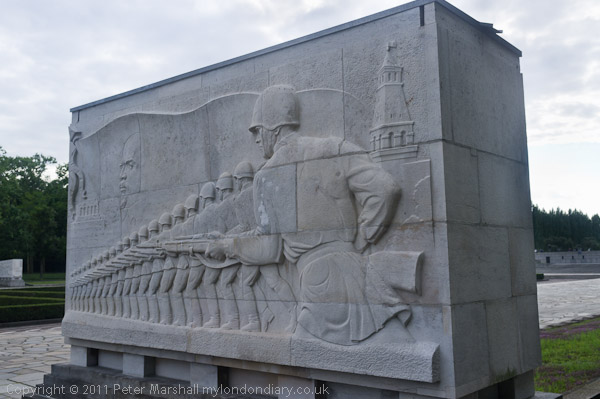
In the central area are 16 large white stone sarcophagi, each representing one of the sixteen Soviet republics, with military scenes carved on them and text in both Russian and German by Stalin: “Now all recognise that the Soviet people with their selfless fight saved the civilisation of Europe from fascist thugs. This was a great achievement of the Soviet people to the history of mankind“.
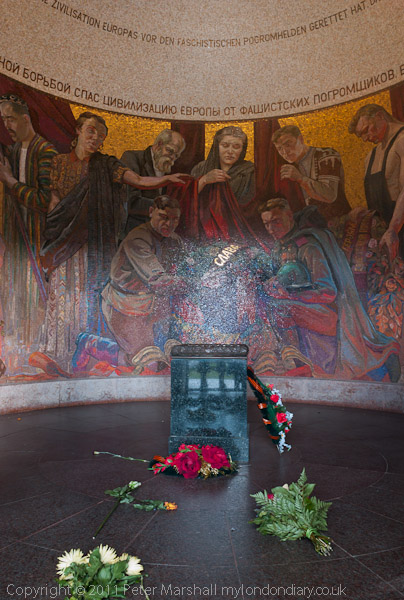
This leads up to a mound with steps up to it and a pavilion above which is a plinth carrying a 12m tall statue of a Soviet soldier with a sword holding a German child, standing over a broken swastika. The pavillion entrance is closed by a locked gate, and I didn’t have a wide enough lens to photograph the mosaic around the rear wall in a single picture.
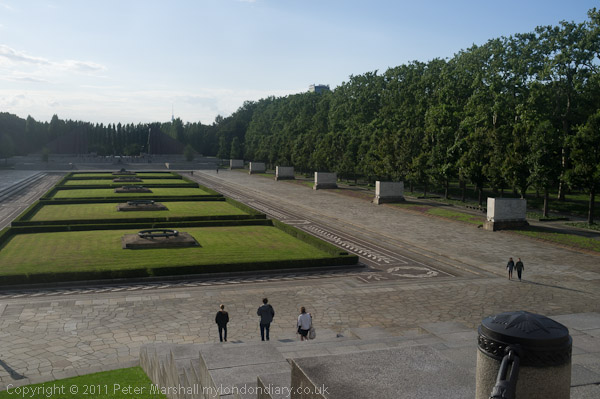
In the entrance to the site, before you reach the flag portal is another sculpture, smaller and in stone of Mother Russia weeping over the loss of her children, and beyond that rows of trees, weeping willows and past them, a row of tall poplars.
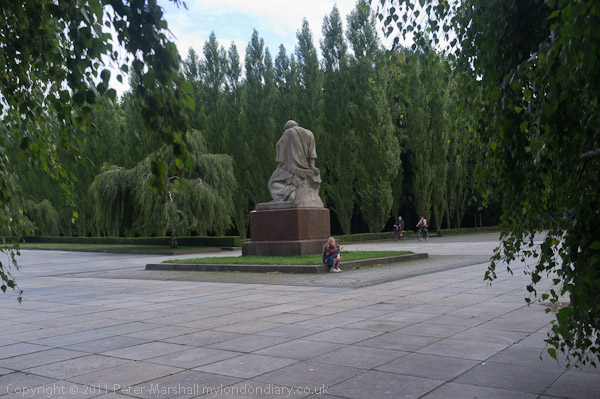
It remains a moving tribute to the dead, and I took many more pictures than appear here. It’s hard to appreciate the scale of the Soviet losses; around 10 million Soviet military died in World War 2, roughly 25 times as many as from the UK, and 20 times theat of the US A. For the civilian population the difference was greater still, with around 30 times as many deaths than the UK. And the Soviet population was only around 3.5 times that of the UK.
More from Berlin to follow shortly.
Previous Berlin post
______________________________________________________
There are no adverts on this site and it receives no sponsorship, and I like to keep it that way. But it does take a considerable amount of my time and thought, and if you enjoy reading it, a small donation – perhaps the cost of a beer – would be appreciated.
My London Diary : London Photos : Hull : River Lea/Lee Valley : London’s Industrial Heritage
All photographs on this and my other sites, unless otherwise stated, are taken by and copyright of Peter Marshall, and are available for reproduction or can be bought as prints.
To order prints or reproduce images
________________________________________________________